Cost Effective CO2 Scrubber: Solutions for Home Use
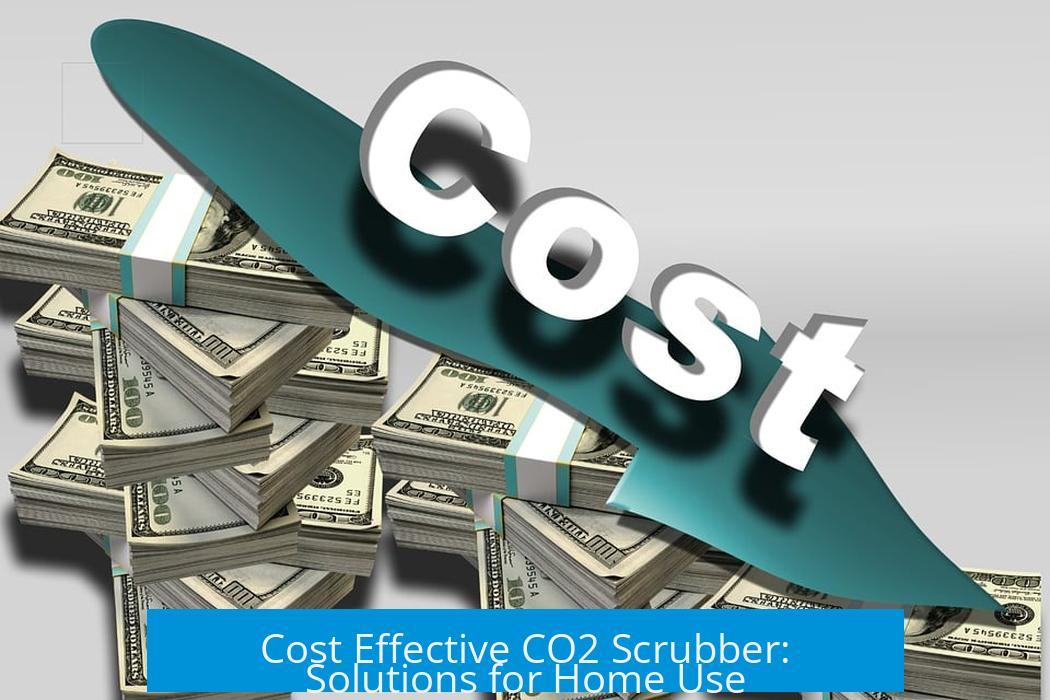
A cost effective CO2 scrubber for home use currently faces significant challenges, as commercial devices typically cost between $5,000 and $10,000 and are not widely available in consumer-friendly formats. Despite that, several alternative approaches offer viable methods for reducing indoor CO2 concentrations while addressing budget constraints and practicality.
1. Commercial CO2 Scrubbers: Cost and Availability
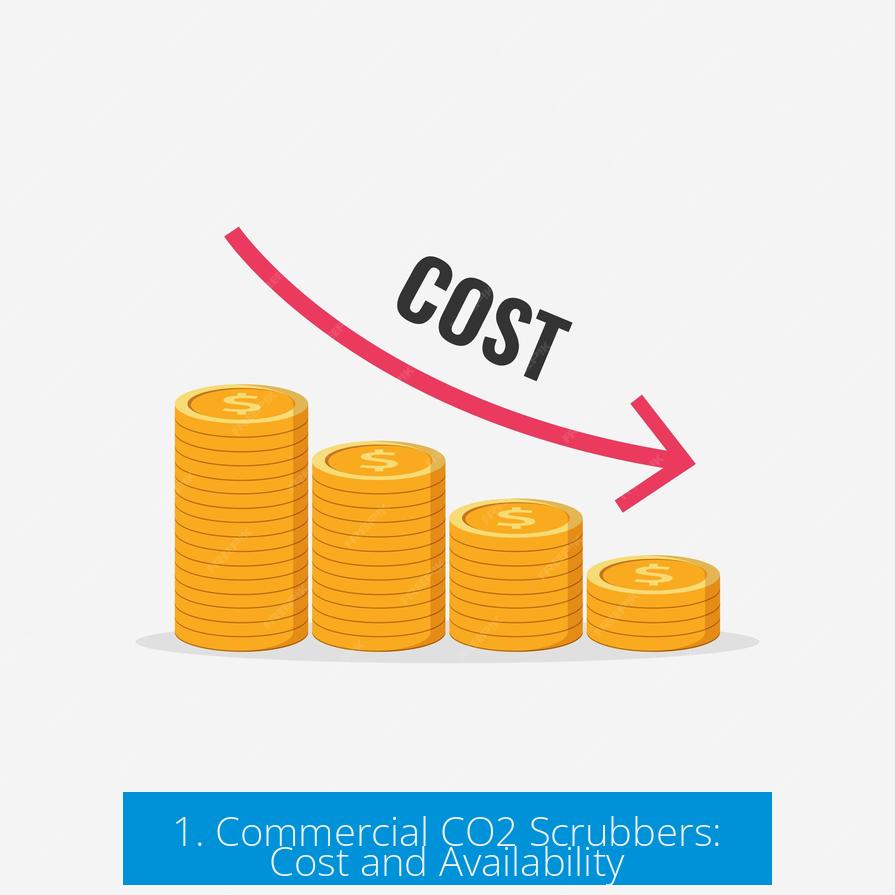
Commercial CO2 scrubbers designed for residential use are rare. Pricing generally falls in the $5,000-$10,000 range, which remains prohibitive for most homeowners. These devices require ongoing maintenance such as replacing absorbent materials or discharging accumulated CO2. No widely adopted home-specific models exist yet, limiting options for consumers.
2. DIY and Low-Cost CO2 Scrubbing Methods
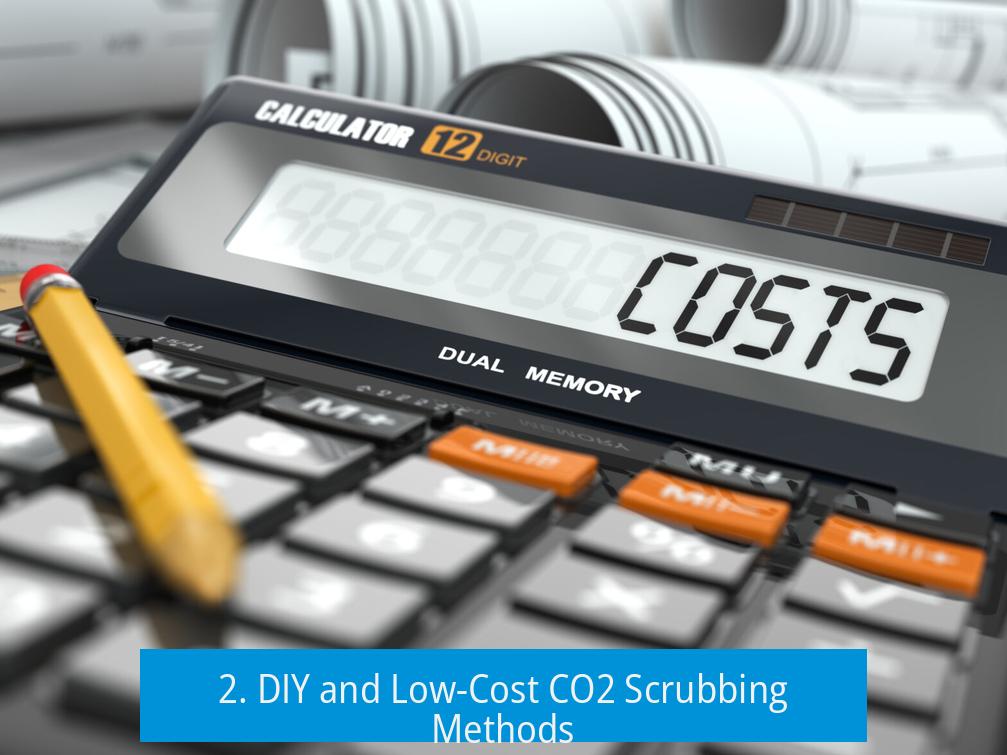
2.1 Algae or Cyanobacteria-Based Scrubbers
Algae and cyanobacteria offer a natural, low-cost method for CO2 removal. These organisms photosynthesize, absorbing CO2 and releasing oxygen. DIY designs propose using transparent pipes or waterfall-like setups to facilitate algae growth under strong light. However, significant water volumes and strong illumination are necessary, which demand substantial electricity. The size and energy requirements often complicate implementation in typical apartments or homes.

2.2 Soda Lime Scrubbing
Soda lime, widely used in diving rebreathers and submarines, absorbs CO2 chemically, producing warm air and water as byproducts. While the method is simple and effective, soda lime requires frequent replacement, making it a temporary and consumable solution. Caution is necessary because soda lime can pose hazards, and the need to manage disposal or regeneration of the absorbent adds complexity to home use.

3. Ventilation-Based Alternatives
Effective ventilation remains the most straightforward and economically viable CO2 mitigation method. Increasing outdoor air exchange through windows, vents, or ceiling fans lowers indoor CO2. Quiet bathroom-style exhaust fans or portable air exchangers that fit into partially opened windows replicate this function without expensive remodeling.
Solar or battery-powered ventilation devices add flexibility by avoiding hard wiring. Continuous or intermittent HVAC fan operation also reduces indoor CO2 concentrations significantly. However, ventilation introduces challenges, such as outdoor air pollution and temperature control, which may require filtering outdoor air or balancing heat exchange.
4. Combined Air Purification and CO2 Scrubbing Devices
Emerging solutions combine air purification with CO2 scrubbing functions. Systems using adsorbent filters capture CO2 during occupancy and release it later when spaces are unoccupied, managing indoor air quality without continuous external venting. A few products, like those from Hydrocell Finland, operate on this principle but are not widely marketed and lack transparent pricing. These devices may represent a future direction, harnessing scheduled CO2 removal to optimize indoor environments.
5. Limitations of Plants for CO2 Scrubbing
Common belief holds that houseplants reduce indoor CO2. In reality, the number needed for meaningful CO2 reduction is impractically large — about 1,000 to 5,000 per person for an 8-hour day under filtered sunlight. Such conditions produce excessive humidity and greenhouse-like environments unsuitable for typical homes. Small collections of plants provide negligible CO2 reduction but enhance ambiance and offer other benefits.
6. Technical Challenges and Considerations
Introducing outdoor air requires careful treatment to avoid particle and chemical pollution ingress. Activated carbon filters offer partial removal of pollutants but lack efficiency for complete purification. HEPA filters effectively remove particles but do not reduce gaseous contaminants like CO2.
Advanced HVAC integrations with control boards and variable-speed fans can optimize outdoor air exchange and filtration but remain uncommon in residential applications. Balancing airtight insulation with fresh air supply is complex and remains a critical engineering challenge.
Summary of Cost Effective CO2 Scrubber Options
- Commercial CO2 scrubbers are expensive and lack home-oriented models; costs typically exceed $5,000.
- Algae-based scrubbers present sustainable but bulky and energy-intensive alternatives.
- Soda lime scrubbing works temporarily but requires frequent replacement and caution.
- Ventilation strategies using fans and window exchangers offer the most practical, low-cost CO2 reduction.
- Combined air purifiers with CO2 capture systems show promise but are not widely available or affordable yet.
- Plants alone are ineffective for significant CO2 scrubbing in typical homes.
- Filter and ventilation balancing involves technical trade-offs, especially for air quality and temperature control.
Ultimately, improved ventilation integrated with filtration remains the most accessible and cost effective CO2 control approach for homes today. Developing affordable, efficient scrubbers tailored for residential use represents a critical gap and opportunity in indoor air quality technology.
Cost Effective CO2 Scrubber: Your Ultimate Guide to Breathing Easier Without Breaking the Bank
Wondering how to reduce indoor CO2 levels without emptying your wallet? A cost effective CO2 scrubber might just be the hero your home deserves. But the reality is a bit messier than a simple purchase. Commercial CO2 scrubbers hover around $5,000 to $10,000, making them more suited to labs and submarines than your bedroom. Yet, don’t despair! There are smart, affordable routes sprinkled across science and DIY ingenuity. Ready to dive in?
Let’s decode the options, the trade-offs, and practical hacks to help you breathe fresher air—without selling a kidney.
Why Even Bother Scrubbing CO2 at Home?
Indoor CO2 can rise quickly, especially in tight spaces or rooms with poor ventilation. High levels cause headaches, poor sleep, and foggy thinking. You might not notice until that fog settles in. Think: sleeping better, improving afternoon focus, and just living smarter. Worth a shot, right?
Commercial CO2 Scrubbers: The Big Price Tag
The average commercial CO2 scrubber runs between $5,000 and $10,000. These machines actively remove CO2 by absorbing and periodically releasing it elsewhere. They often need maintenance: materials replaced, filters cleaned. Plus, most aren’t designed for home use; they integrate into HVAC systems or industrial setups.
Maintenance costs add up too, and the systems can be bulky or complex. For most homeowners, that price feels more like a car payment than a gadget expense.
Unless you’re ready to invest heavily, commercial scrubbers aren’t the sunny solution for your living room. So, what else is out there?
DIY and Alternative Scrubbers: Science Meets Creativity
1. Algae or Cyanobacteria-Based Scrubbers
Algae eat CO2 for breakfast. Literally, they photosynthesize it away! Some eco-wizards have built DIY scrubbers using algae or cyanobacteria tanks. These involve circulating water with algae illuminated with lights to boost photosynthesis. A YouTuber locked himself in a box with a massive algae setup and demonstrated it works.
Sounds exotic, but here’s the catch: To make a dent in CO2, you’d need a big volume of algae-filled water—think about fitting a mini waterfall or aquarium that lights up constantly. This uses quite a bit of electricity and space, making it a challenge for most apartments.
Yet, it’s a low-cost approach compared to commercial devices. Plus, using transparent pipes and creative lighting can jazz up your interior while scrubbing air. Electricity bills might push you to find solar options to power those lights.
2. Soda Lime-based Scrubbers
Submarines and diving rebreathers use soda lime to absorb CO2 effectively. Air passes through soda lime, chemically removing CO2 and producing warm, moist air. Home use? Possible but temporary — soda lime becomes saturated quickly and needs replacement. Plus, handle with caution. It’s a chemical, not just something you’d toss in a vase.
One user reported distilled water aids oxygen generation in such systems, pointing to potential home-brew rebreather concepts. But this DIY route demands care and understanding of chemical safety—you don’t want your scrubber turning into a household hazard!
Ventilation Tweaks: Cheapest and Often Overlooked
Sometimes, the best fix is the simplest one:
- Install quiet bathroom-style vent fans in bedrooms. They suck out CO2 effectively.
- Use fans pointing out windows to push stale indoor air outside.
- Consider solar or battery-powered ventilation units to avoid complicated wiring.
- Repurpose existing bathroom exhaust fans or install filtered air exchangers that let fresh air in without letting noise or pollen crash your space.
This route is promising and affordable. While venting outdoor air helps, polluted air may sneak back in. Use HEPA filters or activated carbon filters carefully to purify incoming air, though activated carbon isn’t perfect for some contaminants.
One fan enthusiast reports dramatically improved sleep after running HVAC fans constantly, with indoor CO2 dropping from over 1000 ppm to 600-700 ppm. That’s a huge leap for health and alertness.
Plant Power? Not Quite the Green Miracle
Here’s a myth-buster: plants don’t scrub enough CO2 indoors.
You’d need approximately 1000 to 5000 plants per person in an 8-hour day with filtered sunlight to make a meaningful difference. That’s a plant jungle and a near-greenhouse humidity level above 90%. Yikes.
Plants still beautify and improve mood. A few by your windowsill? Great. But don’t count on your fern to save you from CO2 buildup overnight. Some suggest bringing plants in during the day and removing them at night, but that’s a dance not many want to learn.
Combined Air Purifiers and CO2 Scrubbers: The New Kids on the Block
Innovation is brewing. Hybrid devices combine air purification and CO2 scrubbing. They absorb CO2 during occupied times then discharge it when the room’s empty, like a clever carbon recycler.
A Finnish product promises this. While pricing details remain scarce and the market niche is narrow, the concept is promising for future home use.
You can explore such products here (warning: Finnish site): Hydrocell Air Products.
Technical Caveats: Balancing Clean Air and Comfort
Cracking windows or blasting outdoor air might seem easy but risks letting in pollutants, pollen, or noise. Filtering incoming air can help but introduces system complexity. Residential HVAC systems rarely come equipped to manage this balance, unlike some industrial or commercial ones with variable fans and dampers.
For those living in tightly sealed, insulated homes, striking the perfect mix of fresh, filtered air without drafts or noise is tricky. Many experimenters call it a “nightmare” of system design.
Final Thoughts: What’s the Best Cost Effective CO2 Scrubber for You?
Here’s the honest scoop:
- If money doesn’t stand in your way, commercial scrubbers deliver solid performance but at a steep price and ongoing maintenance.
- DIY algae setups and soda lime scrubbers offer cheap engineering fun, but they need space, power, or careful handling.
- Ventilation upgrades—quiet fans, window exhaust, filtered exchangers—hit a sweet spot between affordability and effectiveness.
- Forget relying on a few plants alone; they’re just not enough at reasonable scales.
- Watch for emerging combined air purifier/CO2 scrubbers, as tech may soon make your life easier.
So, considering cost, effort, and impact, improving your ventilation stands out as the best cost effective CO2 scrubber approach for most homes today. That means installing quiet vent fans, possibly with DIY airflow tweaks, and filtering outdoor air before it visits your living room party.
“Ventilation is cheap and effective — while high-end scrubbers are amazing, sometimes the best solution is simply to let fresh air in.”
Quick Tips to Start Scrubbing CO2 Cost-Effectively:
- Install a quiet bathroom vent fan in your bedroom. It might just boost sleep quality overnight.
- Use a small window fan to push stale air out; couple it with weatherstripping for a sealed effect.
- Try a compact HEPA air purifier with activated carbon to remove particulates and some pollutants.
- Consider building or buying an algae scrubber if you have space and don’t mind electricity use.
- Don’t rely solely on plants, but keep a few for a mood lift and minor fresher air effects.
What do you think? Which option fits your lifestyle and budget? Is DIY algae magic more your speed, or is quiet ventilation queen of the castle? Share your thoughts—scrubbing indoor CO2 doesn’t have a one-size-fits-all answer, but together we can breathe smarter.
What is the typical price range for a commercial CO2 scrubber suitable for home use?
Commercial CO2 scrubbers generally cost between $5,000 and $10,000. Home-specific models are rare and likely fall within this range. Maintenance costs and material replacement also add to total expenses over time.
Are DIY CO2 scrubbers with algae or cyanobacteria effective and practical for home use?
DIY algae-based scrubbers can be inexpensive but require significant space and light. They also need electricity for lighting and bubbling. Their effectiveness depends on system size, which may be too large for most homes.
How does soda lime function as a CO2 scrubber, and what are its limitations?
Soda lime absorbs CO2 and is commonly used in submarines and diving rebreathers. It produces warm air and water as byproducts. However, soda lime only works temporarily and requires replacement to remain effective.
Can improving ventilation be a cost-effective way to reduce indoor CO2 levels?
Yes, installing quiet vent fans or using window exhaust fans can help exchange indoor air with outdoor air. Solar or battery-powered options exist that avoid wiring hassles. Increased ventilation is often the cheapest method to lower CO2.
Are plants an efficient solution for scrubbing CO2 in homes?
No, typical houseplants do not remove enough CO2. You would need thousands of plants per person in ideal conditions, which is impractical. Better results come from mechanical ventilation or dedicated scrubbers.


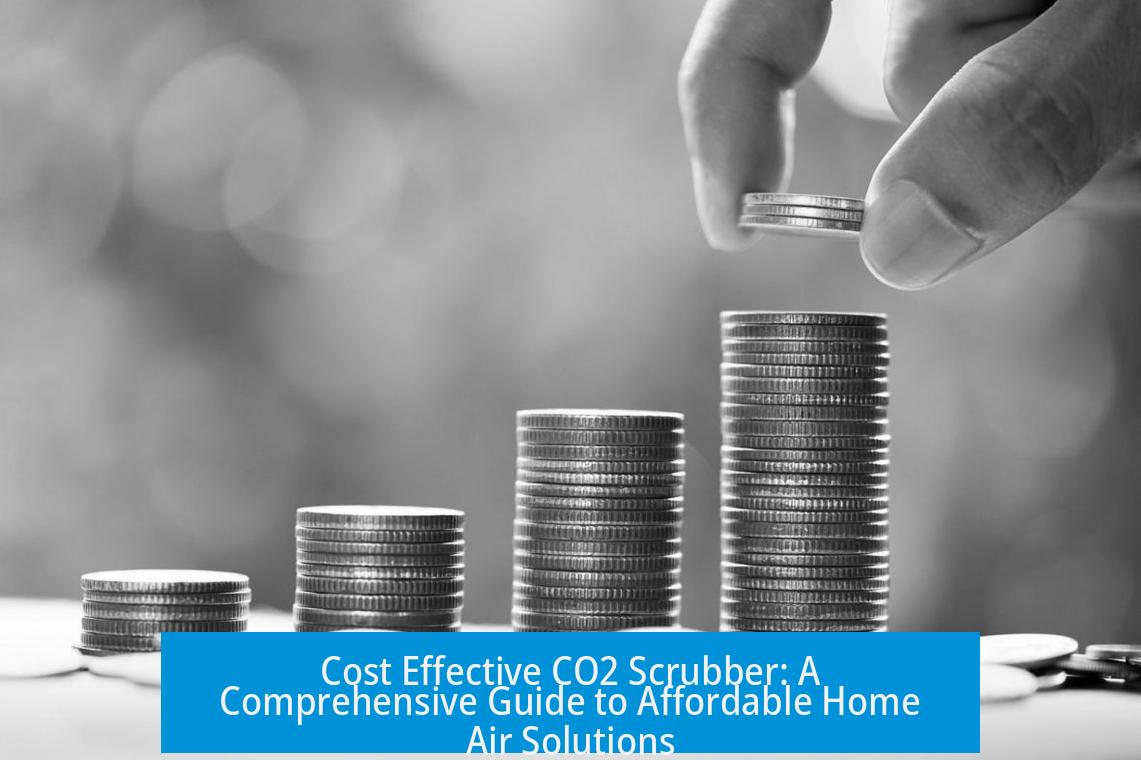
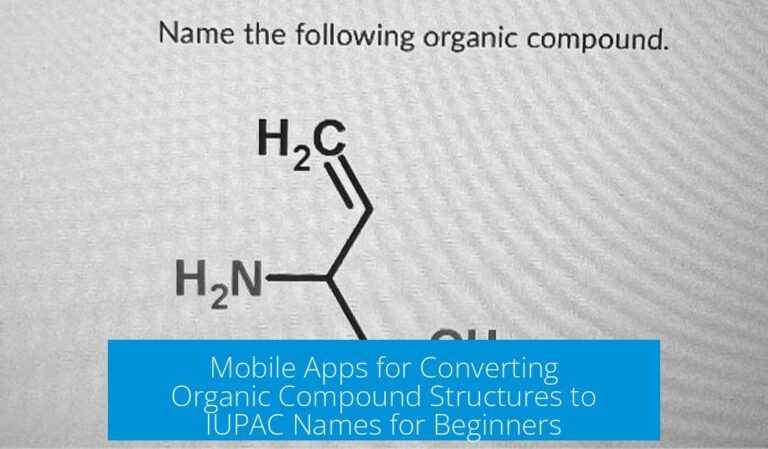

Leave a Comment